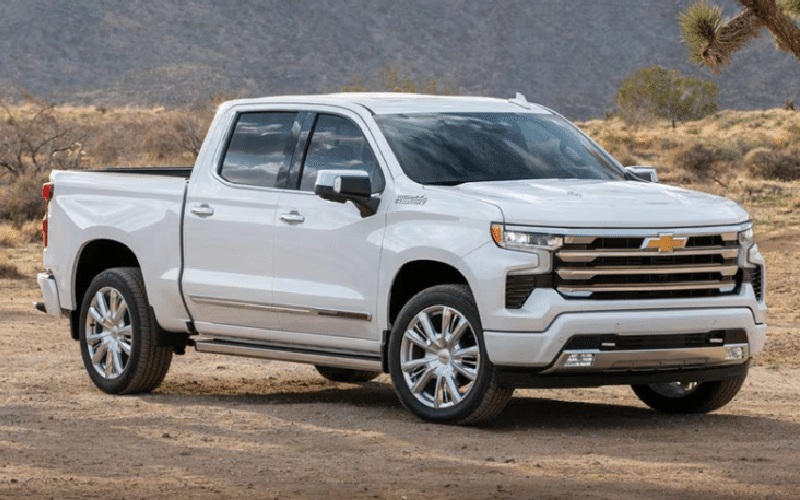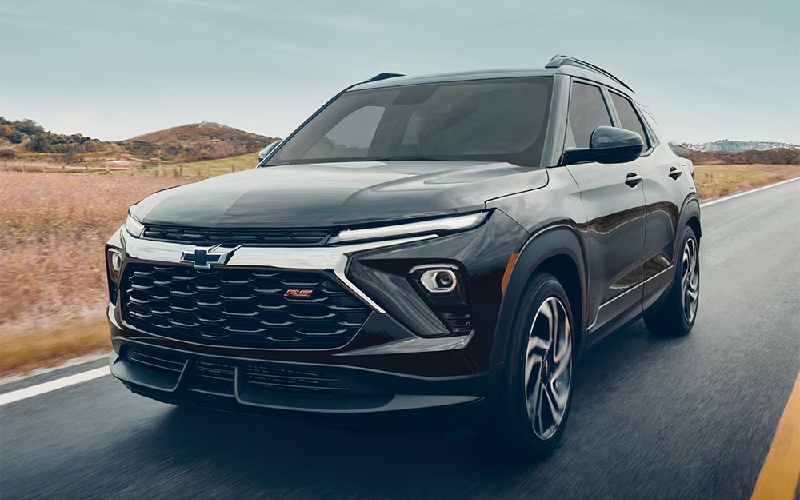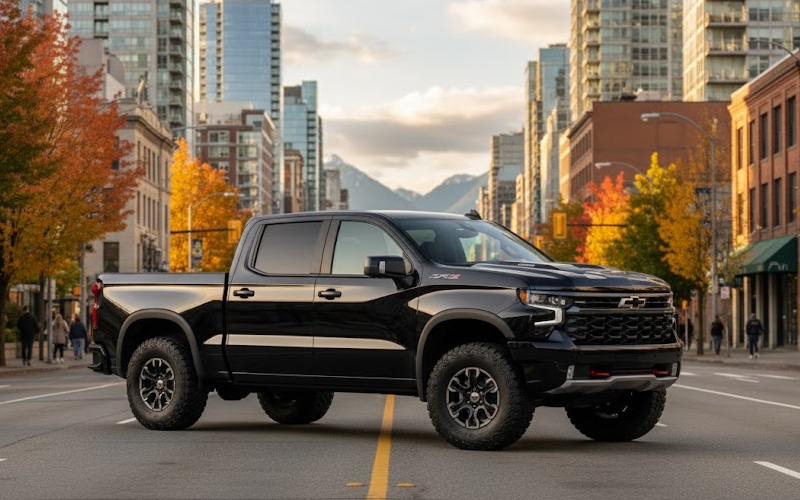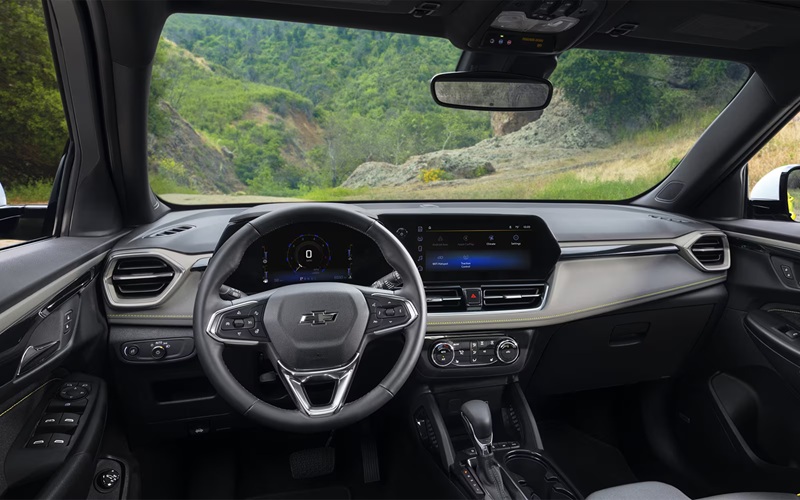The Complete Chevrolet Silverado Guide Across All Generations
The Chevrolet Silverado stands as one of the most enduring and successful pickup truck nameplates in automotive history. Since its official debut as a standalone model in 1999, the Silverado has evolved through multiple generations, each bringing significant advancements in capability, technology, comfort, and efficiency. From work truck to luxury vehicle, the Silverado has continuously […]
The Chevrolet Silverado stands as one of the most enduring and successful pickup truck nameplates in automotive history. Since its official debut as a standalone model in 1999, the Silverado has evolved through multiple generations, each bringing significant advancements in capability, technology, comfort, and efficiency.
From work truck to luxury vehicle, the Silverado has continuously adapted to meet the changing needs of pickup truck buyers while maintaining its core values of durability, capability, and reliability. Whether hauling construction materials, towing trailers, or serving as a comfortable family vehicle, this pickup truck has earned its place as a versatile and trusted companion for countless owners across North America.

First Generation (1999-2006/2007): The Foundation
Design and Platform Evolution
The first-generation Silverado, introduced in 1999 on the GMT800 platform, marked a significant departure from its C/K predecessor. The design featured a more modern and aerodynamic appearance with a sloped windshield, curved body lines, and a distinctive front fascia that clearly differentiated it from the boxier C/K trucks. This generation established the Silverado identity with its bold, chrome-accented grille and dual-port design that would influence future models.
Notable for its time was the extensive use of hydroformed frame rails, which provided superior strength and rigidity while reducing weight. The new chassis design also improved ride quality and handling, addressing one of the primary criticisms of previous Chevrolet trucks.
Powertrain Options
The first-generation Silverado offered a range of engine options to suit various needs:
- 4.3L Vortec 4300 V6: Producing approximately 200 horsepower
- 4.8L Vortec 4800 V8: Generating around 270 horsepower
- 5.3L Vortec 5300 V8: Delivering approximately 285 horsepower
- 6.0L Vortec 6000 V8: Creating up to 300 horsepower in standard models and more in special editions
These engines were paired with either manual transmissions (5-speed NV3500 or NV4500) or automatic transmissions (4-speed 4L60-E, 4L65-E, or 4L80-E, depending on engine and capacity requirements).
Cab and Bed Configurations
The first-generation Silverado offered multiple configurations to suit various needs:
- Regular Cab: Two doors with either a short (1.98 m) or long (2.44 m) bed
- Extended Cab: Featured two front-hinged doors and two rear-hinged doors with a short or long bed
- Crew Cab: Four full-sized doors with a short bed, primarily available on heavy-duty models until later in the generation
Technology and Features
By the standards of its era, the first-generation Silverado introduced several notable technologies:
- Available OnStar system for emergency services and navigation
- Optional CD/cassette audio systems with premium sound packages
- Power accessories, including windows, locks, and mirrors
- Available leather seating and climate control systems
- Introduction of the Z71 off-road package with specialized suspension components
In 2003, a significant mid-cycle refresh brought updated exterior styling, improved interior materials, and enhanced technology options. The first-generation Silverado continued production through 2007 as the “Silverado Classic” alongside the new second-generation models.
Second Generation (2007-2013): Refinement and Power
Design and Structural Improvements
The second-generation Silverado, built on the GMT900 platform, represented a significant evolution in design and engineering. The exterior featured a more upright and imposing stance with a larger grille, more defined fender flares, and improved aerodynamics that contributed to better fuel efficiency. The interior saw dramatic improvements in material quality, design cohesion, and feature content.
Structurally, the second-generation model benefited from a fully boxed frame with hydroformed front sections, a coil-over-shock front suspension, and rack-and-pinion steering, which collectively improved ride quality, handling precision, and overall refinement.
Enhanced Powertrain Technology
The second generation introduced the new Generation IV small-block V8 engines with several significant advancements:
- 4.3L V6: Carried over but refined for better efficiency
- 4.8L V8: Updated for improved performance and efficiency
- 5.3L V8: Available with Active Fuel Management, allowing it to run on four cylinders under light loads
- 6.0L V8: Increased power output and improved efficiency
- 6.2L V8: New premium engine option with over 400 horsepower
Transmission options have been expanded to include more advanced 6-speed automatic transmissions for certain engine combinations, thereby improving both performance and fuel economy.
Special Editions and Variants
The second-generation Silverado introduced several notable special editions:
- LTZ Plus: Premium trim with enhanced interior features and chrome accents
- All-Terrain: Focused on off-road capability with specialized suspension and appearance elements
- White Diamond Edition: Featured unique paint and premium interior appointments
- XFE (Extra Fuel Economy): Incorporated aerodynamic improvements and lightweight components
- Hybrid: The full hybrid model used a two-mode hybrid system with electric motors integrated into the transmission
Technology Advancements
Technology saw significant advancements in the second-generation:
- Available navigation systems with larger colour screens
- Bluetooth connectivity for phone integration
- Rear-view camera systems for improved visibility
- Enhanced stability control systems
- Available luxury features like heated and cooled seats
- Introduction of advanced trailer features and integrated trailer brake controllers
The second-generation model received the prestigious North American Truck of the Year award in 2007 and Motor Trend’s Truck of the Year award, validating its significant advancements over its predecessor.
Third Generation (2014-2018): Technology and Efficiency
Revolutionary Design Approach
The third-generation Silverado on the K2XX platform represented the most comprehensive redesign in the model’s history. The exterior design featured a more chiselled and muscular appearance with stacked headlights, a bold horizontal grille, and more pronounced body lines. Chevrolet engineers focused on aerodynamics, incorporating details such as sealed gaps between the bumper and grille, the tailgate and box side, and air deflectors ahead of the wheels.
The interior design prioritized functionality and technology integration, utilizing higher-quality materials, enhanced ergonomics, and more thoughtful storage solutions. The MyLink infotainment system became a centrepiece of the dashboard design.
EcoTec3 Engine Family
The third generation introduced the entirely new EcoTec3 engine family with three key technologies across all engines:
- Direct fuel injection for improved power and efficiency
- Active Fuel Management (cylinder deactivation) to save fuel during light loads
- Variable valve timing for optimized performance across the RPM range
The engine lineup included:
- 4.3L V6: Completely redesigned to produce 213 kW (285 hp) and 414 N⋅m of torque
- 5.3L V8: Updated to generate 265 kW (355 hp) and 519 N⋅m of torque
- 6.2L V8: The premium option delivering 313 kW (420 hp) and 624 N⋅m of torque
Advanced Materials and Weight Reduction
The third-generation Silverado made strategic use of advanced materials to reduce weight while improving strength:
- High-strength steel comprised approximately 67% of the cab structure
- Aluminum hood, control arms, and other components reduced weight
- Roll-formed steel in the bed provided superior strength compared to stamped steel
- Strategic mass optimization throughout the vehicle reduced weight by up to 180 kg compared to the previous generation
Premium Trim Introduction
The third generation introduced the High Country trim level, a response to increasing demand for luxury pickup trucks. The High Country featured:
- Exclusive saddle brown leather interior
- Heated and ventilated front seats
- Bose premium audio system
- Unique exterior styling elements, including a chrome grille with horizontal bars
- 20-inch chrome wheels
- Additional sound insulation for a quieter cabin
Technology Integration
Technology integration reached new heights with the third-generation:
- MyLink infotainment system with 203 mm touchscreen
- Available 4G LTE Wi-Fi hotspot capability
- Multiple USB ports and power outlets
- Advanced trailering features, including an integrated trailer brake controller
- Enhanced safety features, including forward collision alert and lane departure warning
- Available driver alert package with safety alert seat
Fourth Generation (2019-Present): Innovation and Capability
Bold Design Direction
The fourth-generation Silverado, based on the T1XX platform, features a revolutionary design approach that distinguishes it from its predecessors. The exterior design features a more dramatic stance, with distinctive front-end treatments for different trim levels, integrated aerodynamic elements, and up to eight distinct models, each with unique styling cues. The body grew larger in virtually every dimension while simultaneously reducing weight.
The interior focuses on increased space, particularly in crew cab configurations, which gained 76 mm of rear-seat legroom. The dashboard design prioritizes functional control layout with larger buttons and knobs that you can operate while wearing gloves—a nod to the truck’s work-oriented heritage.
Expanded Powertrain Options
The fourth generation features the most diverse powertrain lineup in Silverado history:
- 2.7L Turbocharged 4-cylinder: Producing 231 kW (310 hp) and 430 N⋅m of torque
- 4.3L V6: Initially carried over from the previous generation
- 5.3L V8: Available with either Active Fuel Management or more advanced Dynamic Fuel Management
- 6.2L V8: The premium gasoline option with 313 kW (420 hp) and 624 N⋅m of torque
- 3.0L Duramax Turbo-Diesel: An inline-six producing 207 kW (277 hp) and 624 N⋅m of torque
These engines pair with either 8-speed or 10-speed automatic transmissions, depending on the engine and configuration.
Advanced Bed Technology
The fourth-generation Silverado places significant emphasis on the pickup bed, traditionally the defining feature of a truck:
- Durabed construction with roll-formed high-strength steel
- Best-in-class cargo volume across all bed sizes
- 12 fixed tie-downs and available power tailgate
- Available 120-volt power outlet in the bed
- Multi-Flex tailgate with six functional configurations (introduced for 2021)
- Available carbon fiber composite bed construction on certain models
Specialized Models
The fourth generation expanded the Silverado lineup with specialized models targeting specific use cases:
- Custom Trail Boss: Off-road capability at a more accessible price point
- LT Trail Boss: Premium off-road model with advanced features
- RST: Street-performance oriented with body-colour trim and sporty details
- High Country: Ultra-premium luxury model with exclusive features
- ZR2: Introduced for 2022 as the most capable factory off-road Silverado
Technology Leadership
The fourth-generation Silverado incorporates cutting-edge technology across several domains:
- Available 203 mm infotainment screen with smartphone integration
- Advanced trailering system with up to 15 camera views
- Head-up display projecting information onto the windshield
- Digital rear-view mirror for unobstructed rear visibility
- Enhanced driver assistance features, including adaptive cruise control
- Available Super Cruise hands-free driving technology (introduced for 2022)
Chevrolet Silverado: A Legacy of Evolution
The Chevrolet Silverado journey from the first generation to the current fourth generation represents a remarkable evolution in pickup truck design, technology, and capability. Each generation has built upon the strengths of its predecessor while addressing weaknesses and introducing innovations that have kept this Chevy pickup competitive in an increasingly demanding market.
From its humble beginnings as a replacement for the venerable C/K series to today’s technologically advanced offerings, the Silverado has maintained its core values of durability, capability, and reliability while embracing modern expectations for comfort, efficiency, and connectivity. With each iteration, Chevrolet has demonstrated its commitment to improving every aspect of the pickup truck experience.
As automotive technology continues to advance at an accelerating pace, the Silverado is poised to continue its evolution, potentially incorporating electrification, further automation, and innovations not yet imagined. What remains certain is that the Silverado nameplate will continue to represent the Chevrolet commitment to building trucks that meet the diverse and demanding needs of pickup owners for generations to come.
Silverado Questions and Answers
What was the first model year for the Silverado as a distinct model rather than just a trim level?
- This truck debuted as a standalone model for the 1999 model year, replacing the long-running C/K pickup truck series that had been in production since the 1960s.
How did the first-generation Silverado differ structurally from its C/K predecessor?
- The first-generation featured a significantly more rigid chassis with hydroformed frame rails, improved suspension geometry, a wider track, and a stronger overall structure that enhanced crash safety, reduced noise and vibration, and improved overall durability.
What innovative suspension technology was introduced with the second-generation Silverado?
- The second-generation model introduced a coil-over-shock front suspension, paired with rack-and-pinion steering, replacing the traditional torsion bar suspension and recirculating ball steering system. This significant improvement in ride quality, handling precision, and overall driving refinement was achieved.
Which Silverado generation first introduced the luxury-oriented High Country trim level?
- The High Country trim level was first introduced with the third-generation model in 2014 as the Chevrolet answer to luxury truck offerings from competitors, featuring premium saddle brown leather interiors, unique exterior styling elements, and exclusive feature content.
What significant powertrain innovation debuted on the 2019 Silverado that had never before been offered in a full-size Chevrolet pickup?
- The 2019 fourth-generation introduced a 2.7L turbocharged four-cylinder engine—the first four-cylinder engine ever offered in a modern full-size pickup truck, producing 310 horsepower and 430 N⋅m of torque.
How did the Silverado Active Fuel Management system evolve between the second and fourth generations?
- Active Fuel Management in second and third-generation models could deactivate four cylinders in V8 engines during light load conditions, while the Dynamic Fuel Management system introduced in the fourth generation can selectively deactivate any number of cylinders in 17 different patterns based on demand, significantly improving efficiency.
What unique feature did the 2020 Silverado HD models introduce to aid with trailering?
- The 2020 models introduced an innovative “invisible trailer” camera system that uses multiple cameras to create a composite view that allows drivers to see “through” their trailer on the infotainment screen, dramatically improving visibility while towing.
Which special edition Silverado featured military-inspired design elements?
- The Special Ops Edition, based on the 1500 Z71, featured naval-inspired camo graphics, black exterior accents, off-road assistance steps, and special badging inspired by naval special warfare operations.
What was the maximum towing capacity of the first-generation Silverado compared to the fourth generation?
- The first-generation had a maximum towing capacity of approximately 4,500 kg when properly equipped, while the fourth-generation can tow up to 6,350 kg—a nearly 41% increase in towing capability over the course of two decades.
*Disclaimer: Content contained in this post is for informational purposes only and may include features and options from US or international models. Please contact the dealership for more information or to confirm vehicle, feature availability.*


